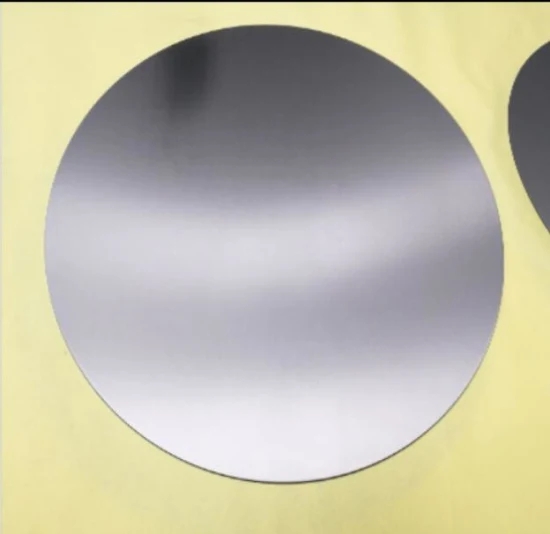| Chemical Composition: | tantalum |
|---|---|
| Material: | tantalum |
| Shape: | as shown |
| Application: | Aviation, Electronics, Industrial, Medical, Chemical |
| Brand Name: | ZZOK |
| Dimensions: | as shown |
| Model Number: | FS-61 |
| Place of Origin: | China (Mainland) |
Quick Details
Specifications
Production:
Tantalum alloys are alloys based on yttrium and other elements. The anodic oxidation film of niobium is very stable, corrosion resistance, excellent dielectric properties, suitable for the manufacture of electrolytic capacitors. It has strong resistance to chemical corrosion. It can resist corrosion of all organic and inorganic acids except hydrogen fluoride, sulfur trioxide, hydrofluoric acid, hot concentrated sulfuric acid and alkali, and can therefore be used as a corrosion resistant material in the chemical industry and medicine. Niobium carbide is an important additive for the manufacture of hard alloys. In addition, germanium is also used in some electron tubes. In 1958, Ta-10W alloy was put into production. In the 1960s, niobium alloys were used as a high-temperature structural material in the aerospace industry. Tantalum and niobium alloy products include plates, strips, foils, rods, wires, shaped parts and sintered products.

Application:
Tantalum and its alloy billets can be produced by powder metallurgy or smelting processes. Powder metallurgy processes are mostly used for the production of small crucible products and blanks for processing. the powdered yttrium material obtained by the thermal reduction method or the electrolytic method is vacuum-sintered after being pressed and formed. The sintering process depends on the use of the product. Primary sintering (1600-2200°C) is used to produce electrodes for smelting and porous anodes. Secondary sintering is used to produce blanks for plastic processing such as forging, rolling, and drawing. between the two sintering often forging or rolling, the processing rate of about 50%. The secondary sintering temperature is 2000-2700°C.
Vacuum consumable arcs and electron beam melting processes are commonly used methods for making niobium and its alloy ingots. the electron beam melting process is mainly used for the purification of yttrium, and the consumable arc smelting process can produce ingots with a larger diameter and a more uniform alloy composition. the consumable arc smelting electrode can be made of a sintered rod or an electron beam smelting ingot. the grains of ingot obtained by the method are coarse, and it is often necessary to crush the as-cast grains to increase the plasticity. Electron beam region melting may be used to further refine or prepare single crystals.
Tantalum alloys are alloys based on yttrium and other elements. The anodic oxidation film of niobium is very stable, corrosion resistance, excellent dielectric properties, suitable for the manufacture of electrolytic capacitors. It has strong resistance to chemical corrosion. It can resist corrosion of all organic and inorganic acids except hydrogen fluoride, sulfur trioxide, hydrofluoric acid, hot concentrated sulfuric acid and alkali, and can therefore be used as a corrosion resistant material in the chemical industry and medicine. Niobium carbide is an important additive for the manufacture of hard alloys. In addition, germanium is also used in some electron tubes. In 1958, Ta-10W alloy was put into production. In the 1960s, niobium alloys were used as a high-temperature structural material in the aerospace industry. Tantalum and niobium alloy products include plates, strips, foils, rods, wires, shaped parts and sintered products.
Application:
Tantalum and its alloy billets can be produced by powder metallurgy or smelting processes. Powder metallurgy processes are mostly used for the production of small crucible products and blanks for processing. the powdered yttrium material obtained by the thermal reduction method or the electrolytic method is vacuum-sintered after being pressed and formed. The sintering process depends on the use of the product. Primary sintering (1600-2200°C) is used to produce electrodes for smelting and porous anodes. Secondary sintering is used to produce blanks for plastic processing such as forging, rolling, and drawing. between the two sintering often forging or rolling, the processing rate of about 50%. The secondary sintering temperature is 2000-2700°C.
Vacuum consumable arcs and electron beam melting processes are commonly used methods for making niobium and its alloy ingots. the electron beam melting process is mainly used for the purification of yttrium, and the consumable arc smelting process can produce ingots with a larger diameter and a more uniform alloy composition. the consumable arc smelting electrode can be made of a sintered rod or an electron beam smelting ingot. the grains of ingot obtained by the method are coarse, and it is often necessary to crush the as-cast grains to increase the plasticity. Electron beam region melting may be used to further refine or prepare single crystals.



